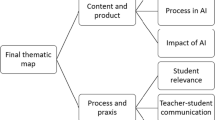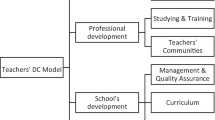Abstract
Curriculum design is a concern in European Universities as they face the forthcoming European Higher Education Area (EHEA). This process can be eased by the use of scientific tools such as Concept-Mapping Techniques (CMT) that extract and organize the most relevant information from experts’ experience using statistics techniques, and helps a working group to achieve conclusions. This paper presents an empirical exploratory research study related to the application of the CMT to the design of the Electronic Engineering (EE) Degree at the University of Seville, Spain. Considering the Career-space conclusions as the initial point, the main relevant competences were identified in a brainstorming technique. These competences are organized according to their affinity using CMT, establishing and interpreting the main clusters and their relative importance. Finally, a reliability analysis of the concept maps was carried out verifying the correctness of the procedure and validating the results for the curricula adaptation.





Similar content being viewed by others
References
Career-Space Project. (2001a). Generic ICT skills profiles. Office for Official Publications of the European Communities.
Career-Space Project. (2001b). Directrices para el desarrollo curricular. Nuevos currículos de TIC para el siglo XXI: el diseño de la educación del mañana. Office for Official Publications of the European Communities.
Commission of the European Communities. (2005). Recommendation of the European Parliament and of the Council on Key Competences for Lifelong Learning, Brussels.
Communiqué of the Conference of European Ministers Responsible for Higher Education. (2005). The European Higher Education Area -Achieving the Goals’, Bergen.
Delbecq, A. L., Van de Ven, A. H., & Gustafson, D. H. (1975). Group techniques for program planning: A guide to nominal group and DELPHI processes. Glenville, IL: Scott Foresman and Company.
Duncan, M. J., & Biddle, B.J. (1974). The study of teaching. New York, NY: Holt, Rhinehart and Winston.
Everitt, B. S. (1993). Cluster analysis. Halsted Press.
Fahrmeir, L., & Hamerle, A. (1984). Multivariate Statistische Verfahren. Berlin: De Gruyter.
Hadjerrouit,An electronic engineering curriculum design S. (2005). Learner-centered web-based instruction in software engineering. IEEE Transactions on Education, 48(1), 99–104.
Joint Declaration on Harmonisation of the European Higher Education Area: May 25th, 1998, by the four Ministers in charge for France, Germany, Italy and the United Kingdom, Paris, the Sorbonne.
Joint Declaration of the European Ministers of Education: June 19th, 1999, ‘The European Higher Education Area’, Bologna.
Kolb, D. G., & Shepherd, D. M. (1997). Concept mapping organizational cultures. Journal of Management Inquiry, 6(4), 282–295.
Likert, R. (1932). A technique for the measurement of attitudes. Archives of Psychology, 22(140), 1–55.
Martínez-Torres, M. R., Barrero, F., Toral, S. L., & Gallardo, S. (2005). A digital signal processing teaching methodology using concept-mapping techniques. IEEE Transactions on Education, 48(3), 422–429.
Nunnally, J. C. (1978). Psychometric theory (2nd ed.). New York: McGraw Hill.
Rychen, D. S., & Salganik, L. H. (Eds.). (2003). Key competencies for a successful life and a well-functioning society. Göttingen: Hogrefe & Huber Publishers.
The University of Tennessee at Chattanooga. (2002). Concept Mapping and curriculum. Grayson H. Walker Teaching Resource Center. Retrieved May 20, 2007 from http://www.utc.edu/Administration/WalkerTeachingResourceCenter/FacultyDevelopment/ConceptMa pping/index.html.
Thomson, C. J. (1997). Concept mapping as a means of evaluating primary school technology programmes. International Journal of Technology and Design Education, 7, 97–110.
Toral, S. L., Barrero, F., Martínez-Torres, M. R., Gallardo, S., & Lillo, J. (2005). Implementation of a web-based educational tool for digital signal processing teaching using the technological acceptance model. IEEE Transactions on Education, 48(4), 632–641.
Toral, S. L., Martínez-Torres, M. R., Barrero, F., Gallardo, S., Vargas, E., & Gónzalez, V. (2006). Planning a master’s level curriculum according to career space recommendations using concept mapping techniques. International Journal of Technology and Design Education, 16(3), 237–252.
Trochim, W. M. K. (1989). An introduction to concept mapping for planning and evaluation. Evaluation and Program Planning, 12(1), 1–16.
Trochim, W. M. K. (1993). The reliability of concept mapping. Paper presented at the Annual Conference of the American Evaluation Association, Dallas, Texas.
University of Deusto and University of Groningen. (2003). Tuning educational structures in Europe, Final Report Phase One. Edited by Julia González Robert Wagenaar.
University of Deusto and University of Groningen. (2005). Tuning educational structures in Europe II Universities’ contribution to the Bologna Process. Edited by Julia González Robert Wagenaar.
Van Neste-Kenny, J., Cragg, C.E., & Foulds, B. (1998). Using concept maps and visual representations for collaborative curriculum development. Nurse Educator, 23(6), 21–25.
Ward, J. H. (1963). Hierarchical grouping to optimize an objective function. Journal of the American Statistical Association, 58, 236–244.
Acknowledgements
Funding for this work was provided by the Spanish PAFPU (“Plan Andaluz de formación del profesorado universitario”), from the Quality Assurance Agency for Andalucía Unversities, (UCUA). We appreciate the continued and enthusiastic support of our project officer, Mª Teresa Padilla.
Author information
Authors and Affiliations
Corresponding author
Additional information
This Project has been funded by the Spanish PAFPU (“Plan Andaluz de formación del profesorado universitario”), from the Quality Assurance Agency for Andalucía Unversities, (UCUA).
Rights and permissions
About this article
Cite this article
Toral, S.L., Martínez-Torres, M.R., Barrero, F. et al. An electronic engineering curriculum design based on concept-mapping techniques. Int J Technol Des Educ 17, 341–356 (2007). https://doi.org/10.1007/s10798-007-9042-4
Received:
Accepted:
Published:
Issue Date:
DOI: https://doi.org/10.1007/s10798-007-9042-4




